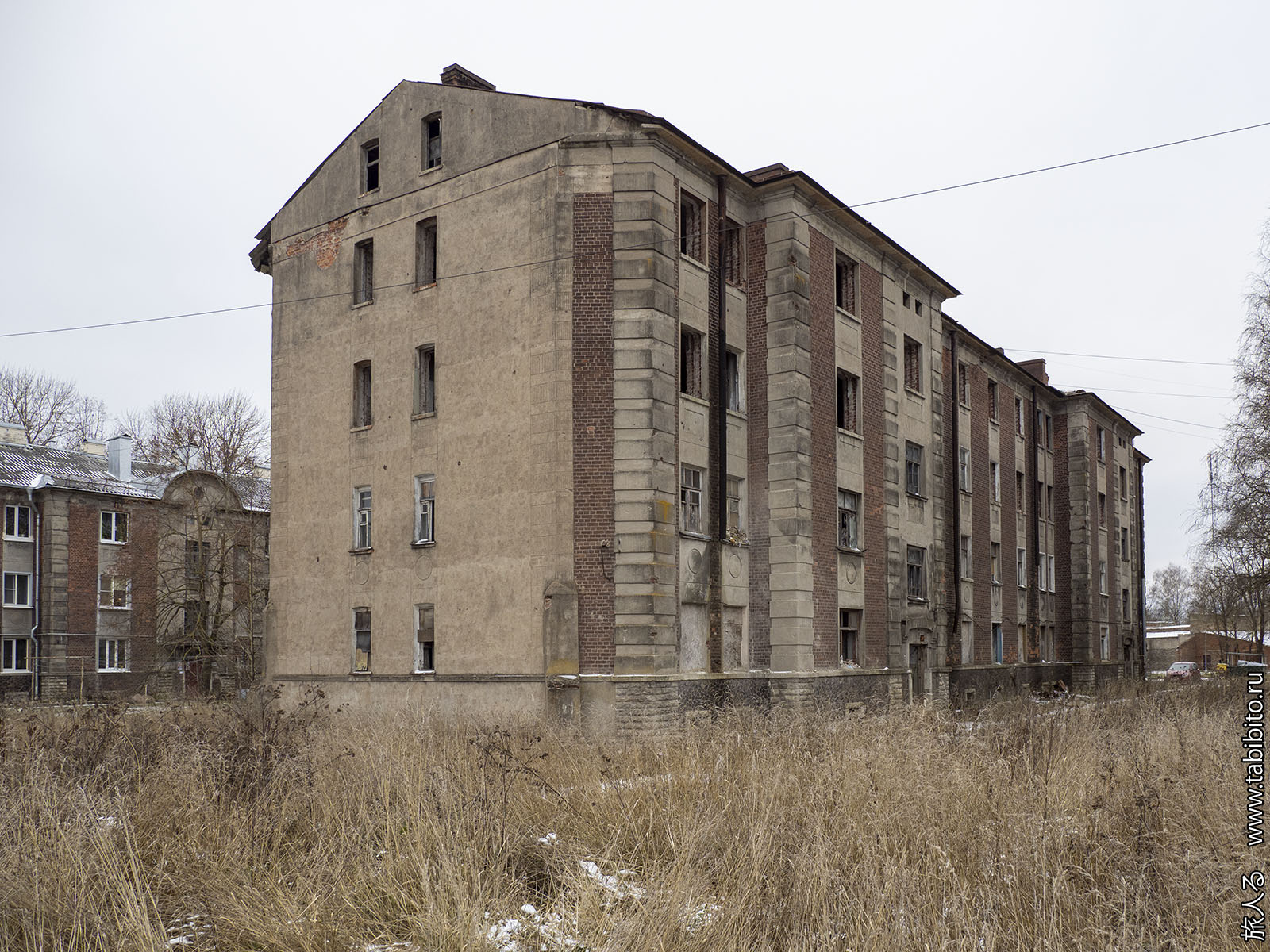旅人る - Tabibito
Ivangorod
A border town in Leningrad oblast, overlooking the European Union.
On the left is Russia, on the right is Estonia.

Ivanogorod was founded by czar Ivan III exactly opposite the Danish fortress Rugodiv, which was later renamed into Narva. After the Northern War and until 1991, Narva and Ivangorod were actually part of one state (the Russian Empire, Estonia and the USSR), but now they are again two border fortresses looking at each other. Ivangorod castle looks much more impressive
Narva castle on the other hand has one tower, and a few walls.
Nevertheless Narva boasts with a town hall, which is hidden behind Soviet three-storey buildings.

And a Lutheran church, the tower of which was restored to its former forms, but for some reason lined with the ugly silicate brick.

Park on the embankment of Narva.
Estonians troll the Russians by hanging the Ukrainian flag upside down in front of the border (just kidding, in fact it is the flag of Narva). Unlike Sovetsk, no Z's are displayed from the Russian side.

The hydroelectric power station remained on the territory of Russia.

Although the Ivangorod fortress was better preserved, it was not fully restored after WWII.
Museum in the building of the former powder storage.
Museum cat.

Assumption and Nikolskaya churches (1558).
Two mortars on the territory of the fortress.
Huge border checkpoint to the north of the Ivangorod fortress.

T-34 tank to frighten Estonians.
View from the Russian embankment.
Most residents of Ivangorod live in Soviet concrete-paneled apartment buildings. One of the residents obtained a tire at a separate waste collection.

Few pre-revolutionary buildings near the castle.
Houses built after the WWII.
Aside the castle Ivangorod has a very interesting neighborhood called Parusinka. In the middle of the 19th century, on the banks of the Narva, baron von Stieglitz established the Kreenholm Manufacturing Company, which originally produced sailcloth (hence the name). Before the collapse of the USSR, the factory existed as a single complex, but then the hydroelectric power station and the main residential areas ended up on the territory of Russia, almost all production buildings - in Estonia. As a result, now there is no production anymore.
Urban improvements.
Details.
Embankment. Estonian territory on the other side with an abandoned factory.
A collapsed footbridge where workers used to walk. Now, however, there is another bridge nearby with a pedestrian checkpoint for locals.

Considerable part of Ivangorod residents might be involved in smuggling. The poster reads "Bond cigarettes blue 70 rubles per pack".

Water is sometimes released along the old bed of the Narva River, and then a beautiful waterfall can be seen from embankment. But not at this time.
The only production part of the factory left in Russia also does not work.
Soviet sculpture at the former factory checkpoint.

Several interesting houses in Parusinka.
Former working barracks with preserved ceramic plaques and a cast-iron umbrella over the entrance.
Former hospital.
Estonian manhole cover.

The neglected embankment of the Narva diversion canal.
Kittens from Parusinka.
The Church of the Holy Trinity (1875) in the southernmost part of Parusinka
Ivangorod is interesting, but, unfortunately, it is very difficult to get here. You have to obtain a special permit beforehand. All transport from Russia to Ivangorod is inspected at the checkpoint at the entrance to the city.

Getting in (as of November 2022): Direct Narvskoe highway from St. Peterburg. Public transit options are limited: just one train per day and a few direct buses. Better connection via Kingisepp.
What to buy: fish hall Unix on Narovskaya street sells excellent smoked lampreys.
| << Saint Petersburg << Pavlov | Kingisepp >> Primorsk >> |


































































































